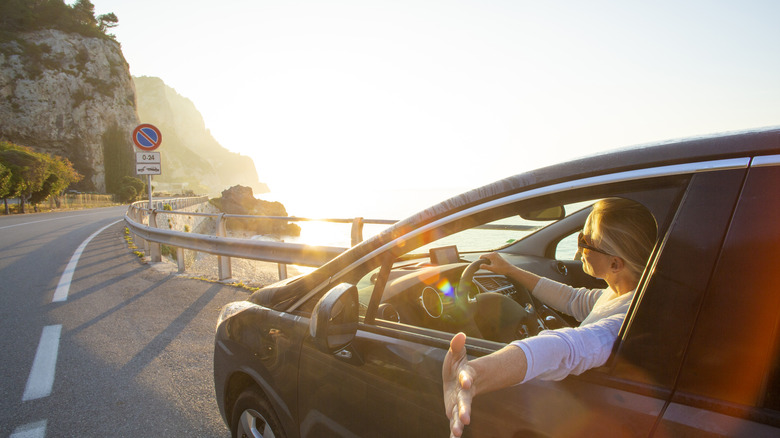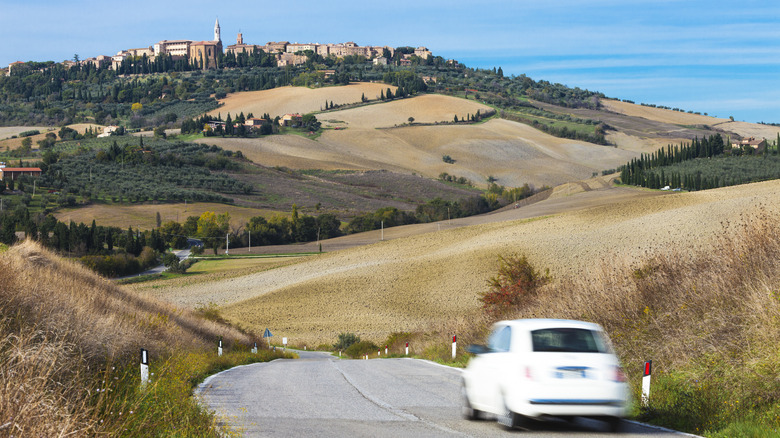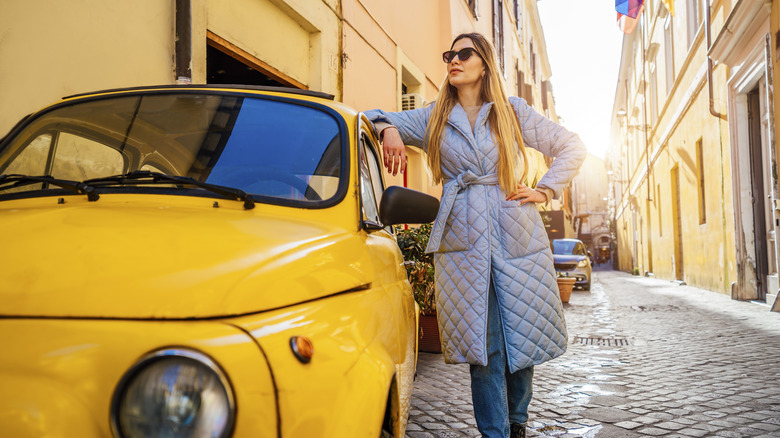Follow One Crucial Rule To Avoid Looking Like A Tourist While Driving In Italy
Italy is a gorgeous country and if you only stay in big cities Rome or Venice, you're missing out on some incredible scenery. While you can take trains to many places, some people prefer the freedom that having a car gives you. You can decide last minute to jump in and drive to, say, Montepulciano or Cortona, or just keep going to see where you end up. That said, there are rules to know about driving in Italy, and not following one of them is going to out you as a tourist immediately. That rule is about passing other cars and letting them pass you.
As you motor along Italy's roadways, you should note that the left lane is for passing other cars. That doesn't just apply to when you're passing someone else. If you see someone flashing lights at you from behind, that's an indication that they want to pass. It seems like a small thing, but not knowing this rule can cause Italian drivers to become annoyed. That's not the only crucial transportation mistake people make in Italy. There are other rules you need to know to avoid fines that will follow you back to America, and to stay as safe as possible. Here's what you need to know about the rules for driving in Italy.
Getting in the car in Italy for the first time
As of 2021, Italy has been ranked as the sixth most dangerous European country to drive in, which is why it's important to know what you're doing. First, note that you must be 18 to drive in Italy. You should also have an international driving permit (IDP), which you must apply for in advance, in person or by mail. You will be asked for it if you're pulled over. If you have a child with you, make sure you have the correct car seat, as rules are different in Italy. You drive on the right side of the road, which is comfortable for most of us, but again, only pass on the left. You cannot make turns on red lights anywhere. Cars have the right of way, but keep an eye out for pedestrians, cyclists, and motorbikes.
When renting your car, go for a smaller one if you can fit. There are many narrow streets in Italy and tiny parking spots so you'll have more options. Prepaying for your rental might end up costing you money, so keep that in mind. Travel pro Rick Steves has some tips for choosing a rental car company in Europe to help out. If you don't drive manual, book early to make things easier on yourself with an automatic transmission. Before you leave for the day, take some cash with you, as many parking spots only take that.
What to know once you begin driving in Italy
Here are more rules/customs to know before driving in Italy. Always yield to people on the right. If you don't move immediately on the green light, you will be honked at by Italian drivers. The big thing that messes up tourists is the ZTL or Zona a Traffico Limitato, which are areas, often in smaller cities, where cars are not permitted. You'll be fined and can't just skip town to get rid of it. Don't even try. Don't skip tolls either, which you'll find on larger roads called Autostrade. Take a ticket as you enter the road (don't put it next to your phone or it can demagnetize) and pay (cash or card) when you exit.
There are sign color codes tourists should know as well, with green being larger motorways. Blue signs indicate urban roads, white are for local roads, and brown are for points of interest and scenic spots. Pay attention to speed limit signs (red circle with a black number inside) because these limits are enforced. If you're pulled over, you have to pay your fine on the spot with a credit card.
Parking is a bit different in Italy as well. It's rough in larger cities (and if you see lots of parking signs, you may be near a ZTL). Blue-lined spots are for paid parking, yellow for disabled (and you will be fined for parking there illegally), and white is free, but might be timed.


